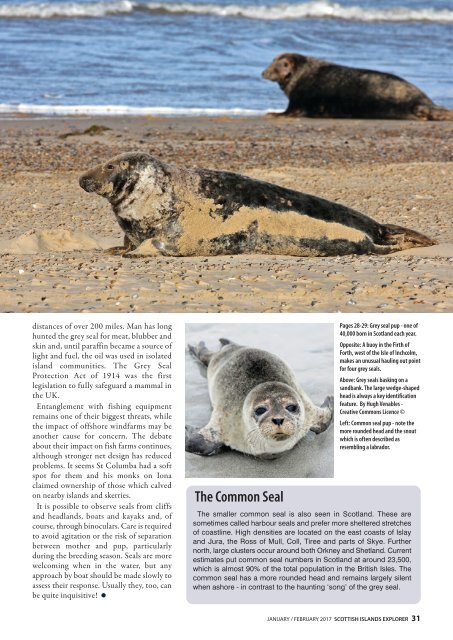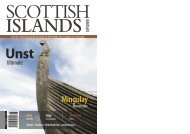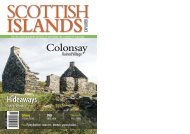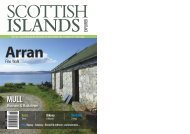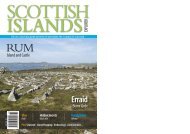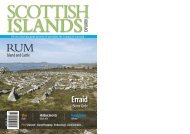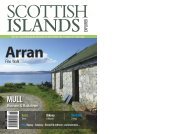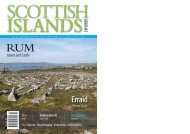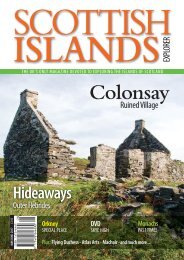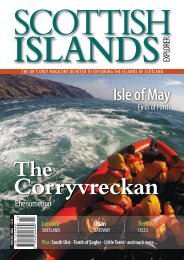Create successful ePaper yourself
Turn your PDF publications into a flip-book with our unique Google optimized e-Paper software.
distances of over 200 miles. Man has long<br />
hunted the grey seal for meat, blubber and<br />
skin and, until paraffin became a source of<br />
light and fuel, the oil was used in isolated<br />
island communities. The Grey Seal<br />
Protection Act of 1914 was the first<br />
legislation to fully safeguard a mammal in<br />
the UK.<br />
Entanglement with fishing equipment<br />
remains one of their biggest threats, while<br />
the impact of offshore windfarms may be<br />
another cause for concern. The debate<br />
about their impact on fish farms continues,<br />
although stronger net design has reduced<br />
problems. It seems St Columba had a soft<br />
spot for them and his monks on Iona<br />
claimed ownership of those which calved<br />
on nearby islands and skerries.<br />
It is possible to observe seals from cliffs<br />
and headlands, boats and kayaks and, of<br />
course, through binoculars. Care is required<br />
to avoid agitation or the risk of separation<br />
between mother and pup, particularly<br />
during the breeding season. Seals are more<br />
welcoming when in the water, but any<br />
approach by boat should be made slowly to<br />
assess their response. Usually they, too, can<br />
be quite inquisitive!<br />
The Common Seal<br />
Pages 28-29: Grey seal pup - one of<br />
40,000 born in Scotland each year.<br />
Opposite: A buoy in the Firth of<br />
Forth, west of the Isle of Inchcolm,<br />
makes an unusual hauling out point<br />
for four grey seals.<br />
Above: Grey seals basking on a<br />
sandbank. The large wedge-shaped<br />
head is always a key identification<br />
feature. By Hugh Venables -<br />
Creative Commons Licence ©<br />
Left: Common seal pup - note the<br />
more rounded head and the snout<br />
which is often described as<br />
resembling a labrador.<br />
The smaller common seal is also seen in Scotland. These are<br />
sometimes called harbour seals and prefer more sheltered stretches<br />
of coastline. High densities are located on the east coasts of Islay<br />
and Jura, the Ross of Mull, Coll, Tiree and parts of Skye. Further<br />
north, large clusters occur around both Orkney and Shetland. Current<br />
estimates put common seal numbers in Scotland at around 23,500,<br />
which is almost 90% of the total population in the British Isles. The<br />
common seal has a more rounded head and remains largely silent<br />
when ashore - in contrast to the haunting ‘song’ of the grey seal.<br />
JANUARY / FEBRUARY <strong>2017</strong> SCOTTISH ISLANDS EXPLORER 31


